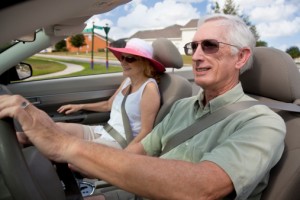 Balancing safety with dignity is difficult, as many elderly people are fiercely protective of their ability to drive.
Balancing safety with dignity is difficult, as many elderly people are fiercely protective of their ability to drive.
Telling someone they are an unsafe driver is difficult and may end in defensiveness and hurt feelings. But the truth is, some drivers are more at risk of being involved in a car crash than others. And while the statistics might not apply to each crash, they do speak volumes.
- In 2009, there were 33 million licensed drivers aged 65 and older in the U.S. That is a 23 percent increase from 1999, and the number is growing.
- In 2008, more than 183,000 older adults were injured in auto accidents and more than 5,500 were killed. The growing number of elderly drivers may boost these numbers.
- The risk of being involved in a fatal car accident increases beginning at age 75 and increases even more dramatically after age 80.
- In 2011, the fatality rate for accident victims aged 85 and older was 16.30 per 100,000 population. This was the highest fatality rate of any age group.
- Most traffic fatalities involving older drivers occurred during the day time (77%), on weekdays (71%), and involved other vehicles (67%).
Three-Pronged Plan
The National Highway Traffic Safety Administration recently announced a five-year plan to improve the safety of elderly drivers, their passengers, and fellow motorists. The plan brings attention to the touchy subject of the safety of driving into old age, particularly driving in New Jersey.
Life changes as we age. Things we once did with ease become more difficult. One of the most difficult parts of aging is adjusting to age-related changes, as they often mean less independence.
For many, driving is a major sign of independence. It’s often one of the last things to go before an elderly person goes into a nursing home or to live with family. These drivers are often hyper-vigilant when behind the wheel because they recognize their waning abilities. In some instances, however, they put themselves and other drivers at risk of an accident.
The five-year NHTSA plan will focus on three issues:
- Vehicle safety, including technology like vehicle-to-vehicle communications and collision avoidance.
- Data collection, including studies on how physical, perceptual, and cognitive changes associated with aging can affect drivers.
- Driver behavior, including public education and campaigns to inform the elderly and their caregivers of their unique risks.
The state of New Jersey does not place special restrictions on elderly drivers. Like all other drivers, they may be subject to vision and written tests to renew a license. But, they cannot lose their driving privileges without cause. In many cases, it’s up to an elderly driver’s family or even physician to make that call.
Elderly Drivers Not Always To Blame
Often, when we discuss elderly drivers’ safety, we miss some key points. Older drivers are more likely to avoid certain dangerous driving conditions. In this regard, they may be more cautious than the rest of us. More than 60 percent of older female drivers avoid driving at night and in bad weather, situations that would increase their accident risk. They also drive fewer miles than younger drivers.
The Centers for Disease Control and Prevention also reports that older drivers are most likely to use safety belts. About 77 percent of older vehicle occupants involved in fatal crashes were buckled up. This is compared with only 63 percent of other adult occupants.
Finally, older adults are less likely to drive under the influence of alcohol. Only 5 percent of older adults involved in fatal accidents had blood alcohol levels over the legal limit. That’s quite a contrast to the 25 percent of drivers between the ages of 21 and 64.
With a growing number of people distracted behind the wheel and a rise in elderly drivers who are vulnerable to serious injury in accidents, we could see a serious upswing in fatalities involving seniors. These would have less to do with the waning abilities of older drivers and more to do with the increasing public health issue of distraction behind the wheel.
